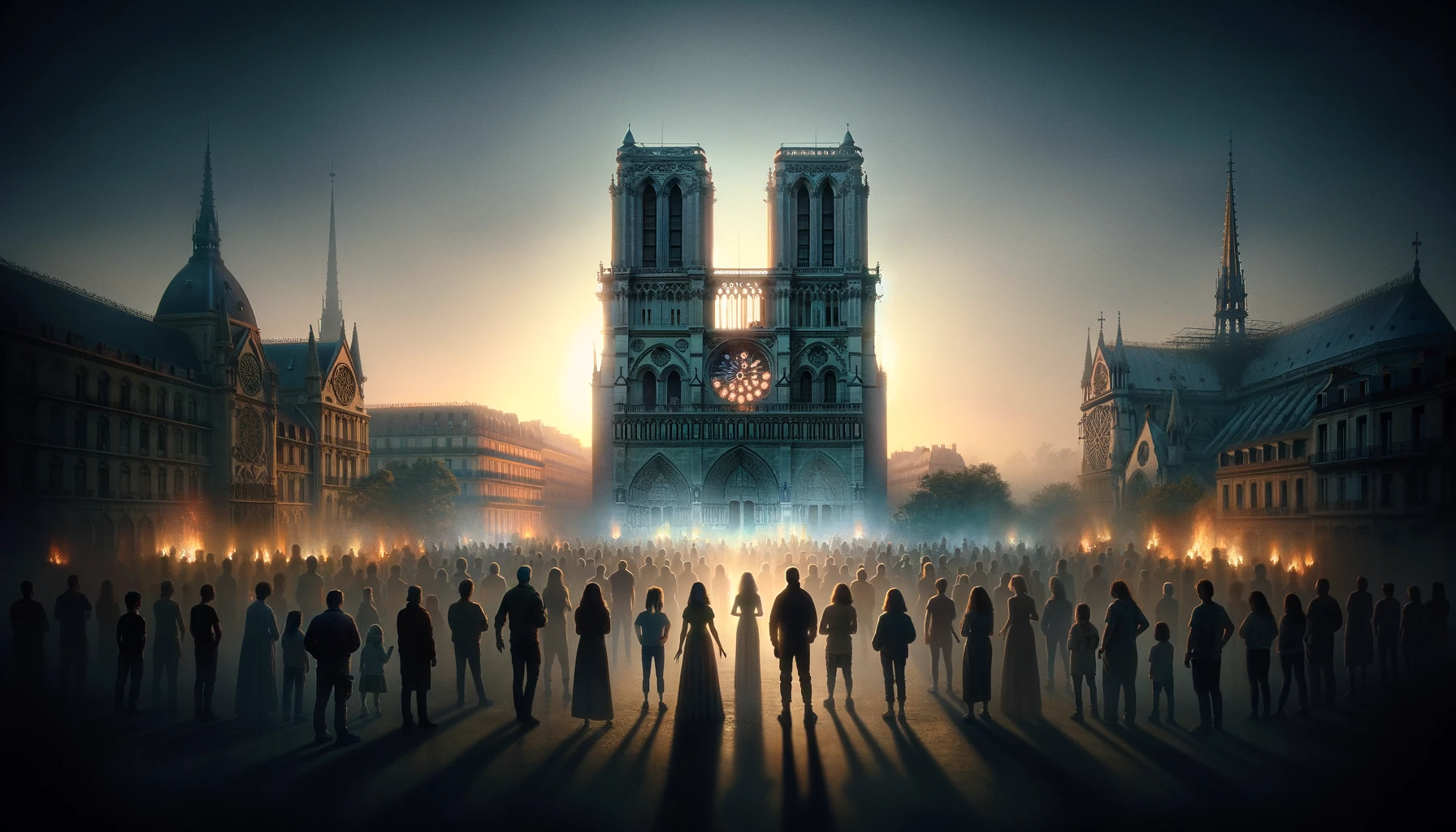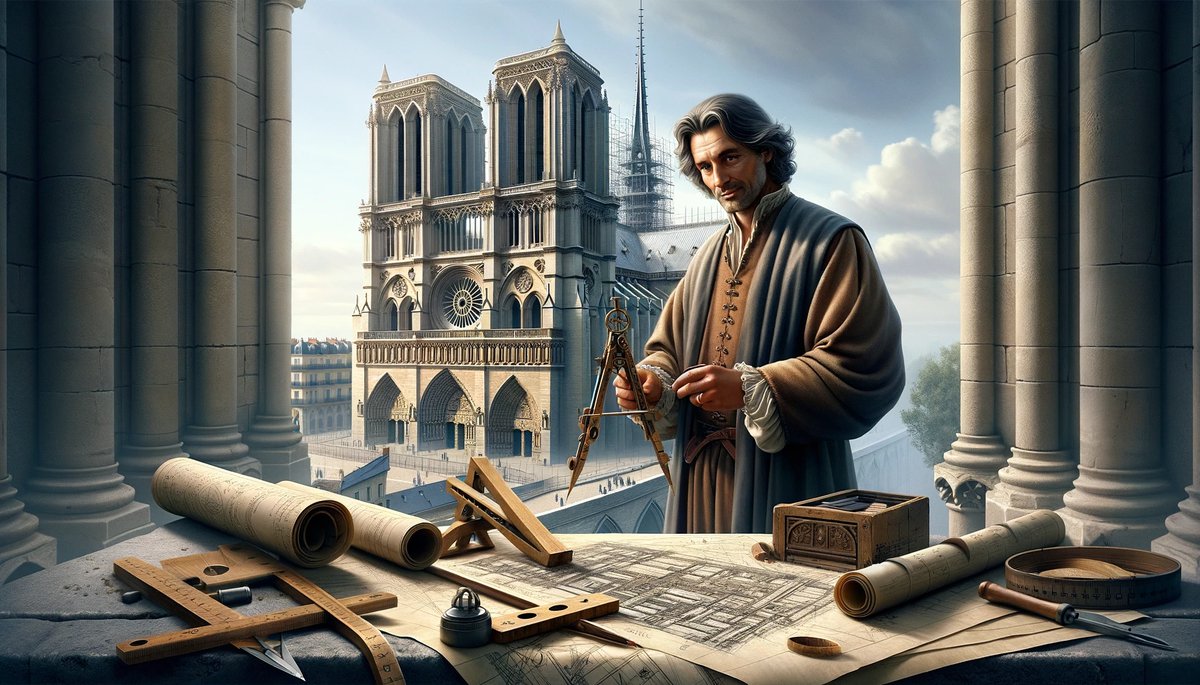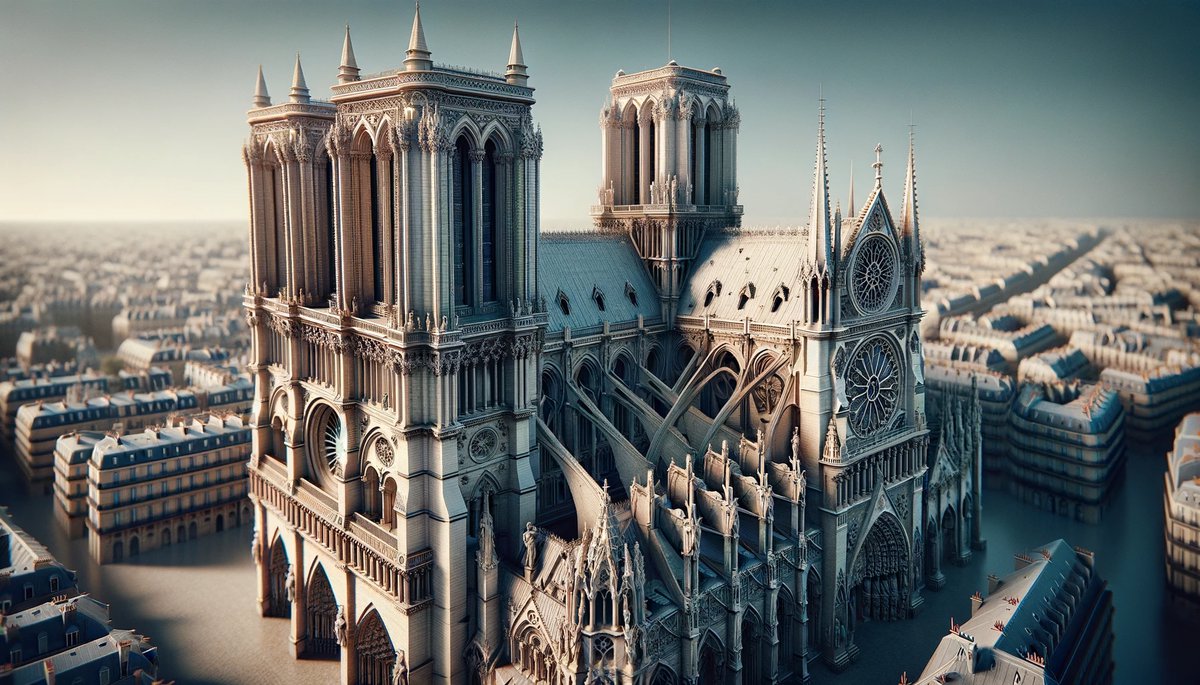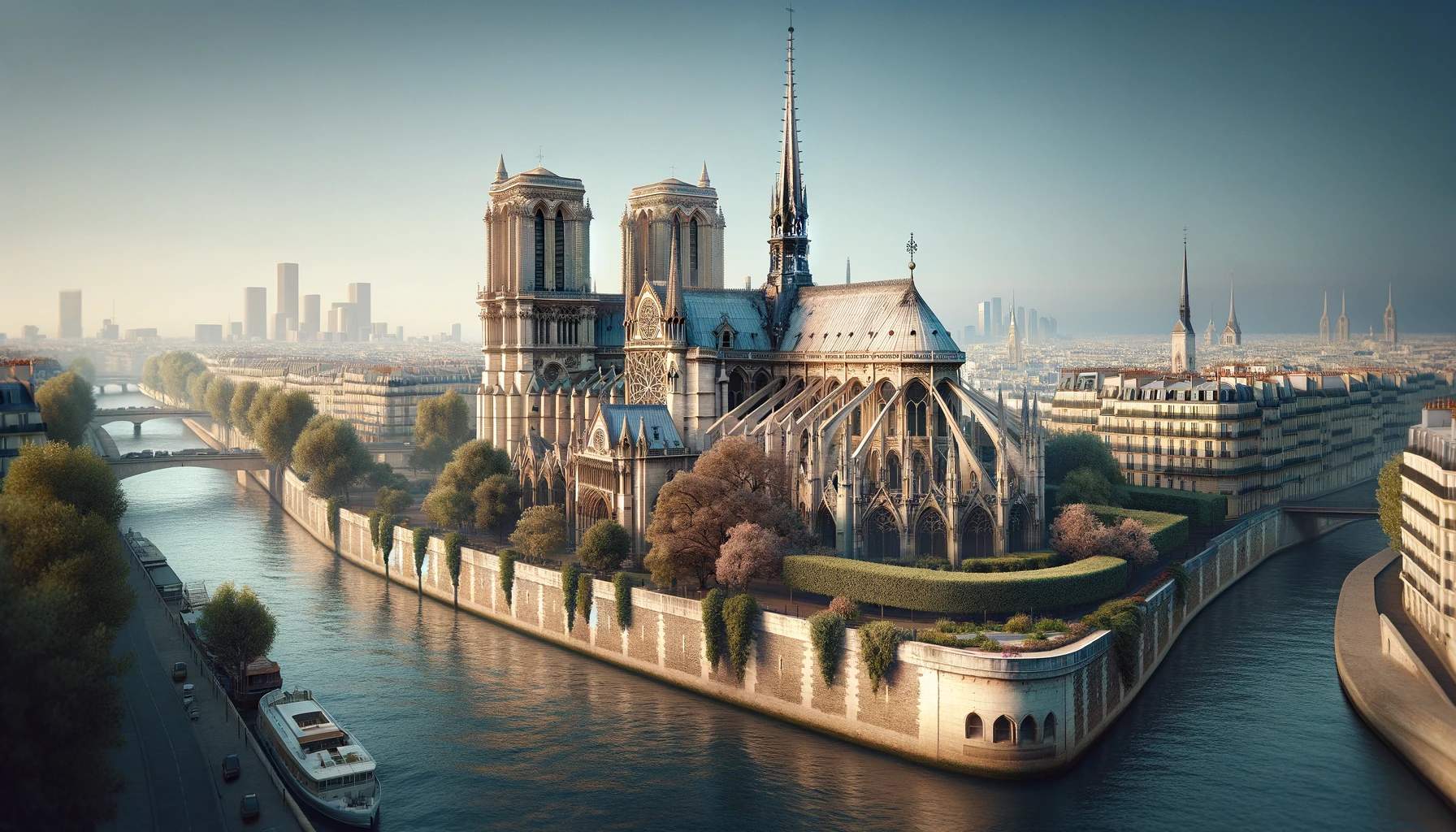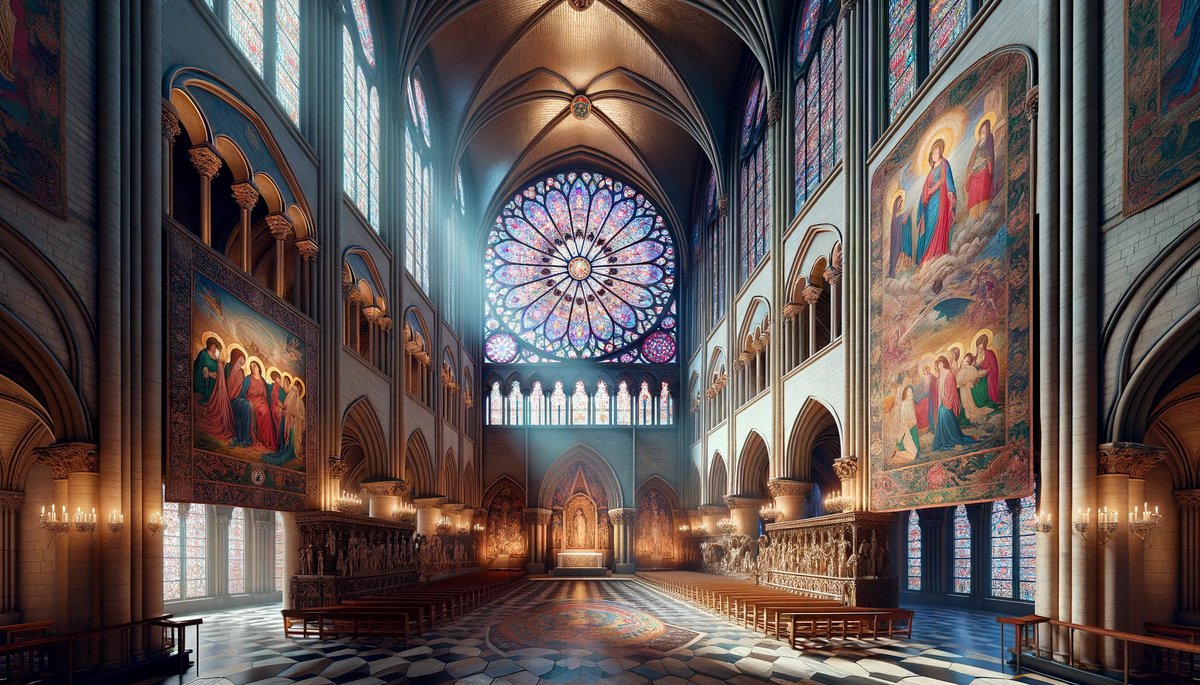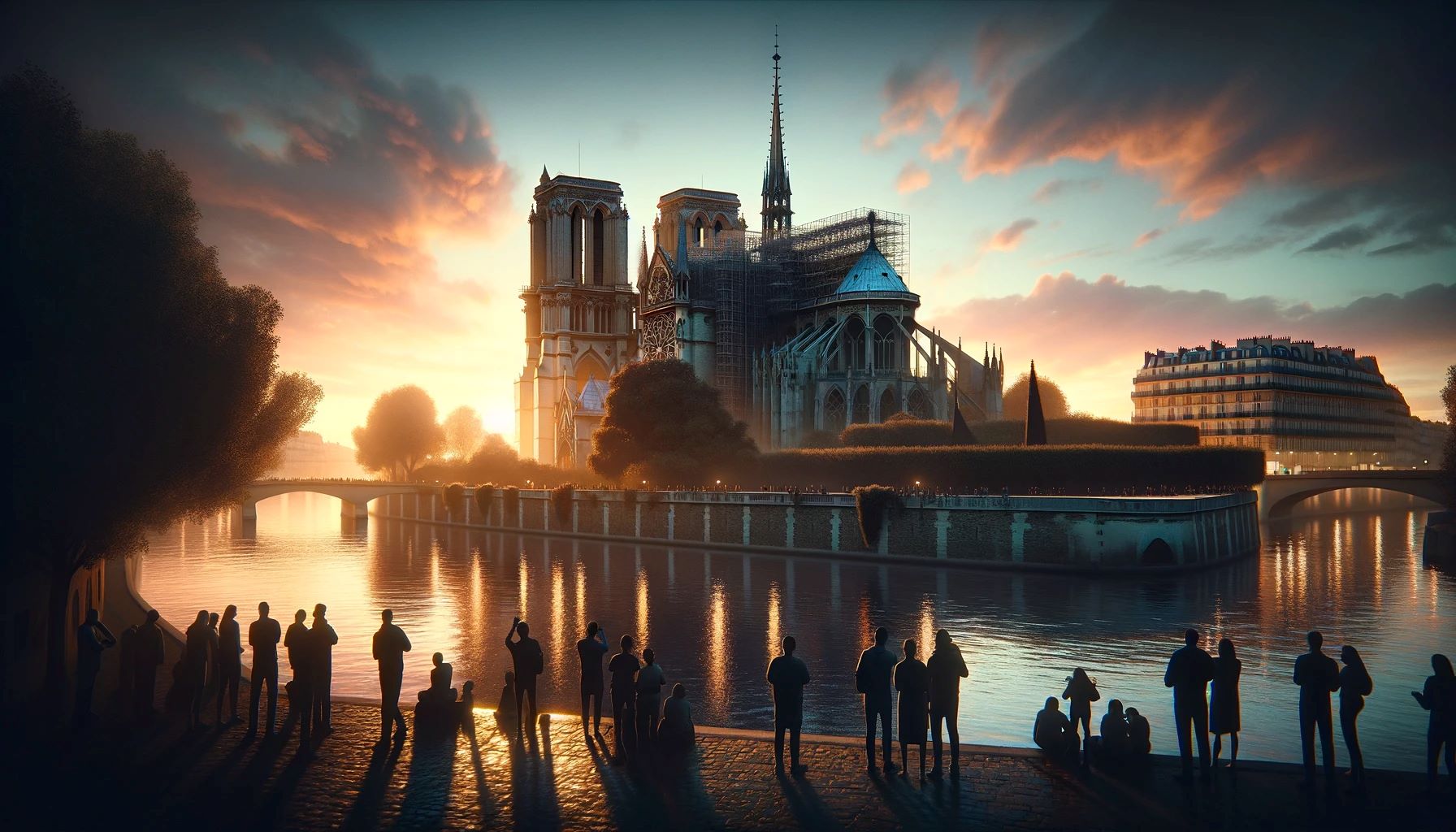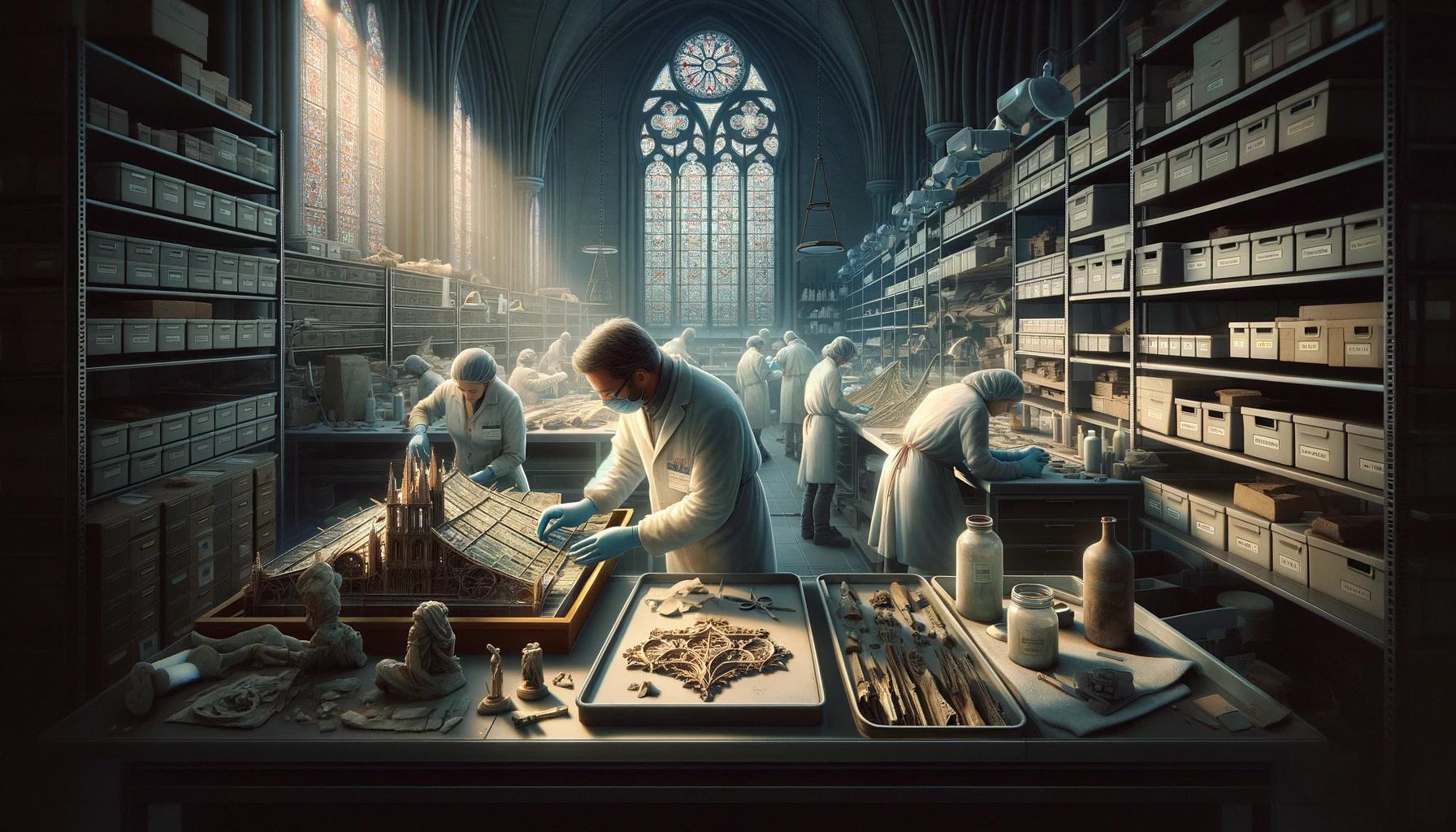Home>Arts and Culture>When Was The Notre Dame Basilica In Montreal Built


Arts and Culture
When Was The Notre Dame Basilica In Montreal Built
Published: February 10, 2024
Ericka Andersen, an editor at Christian.net, expertly merges digital strategy with content creation, focusing on faith and societal issues. Her communication skills enhance the platform's engaging narratives, fostering meaningful dialogue on belief's impact on society.
Discover the history of the Notre Dame Basilica in Montreal, a masterpiece of arts and culture, and learn about its construction and significance. Explore the architectural marvel that has stood the test of time.
(Many of the links in this article redirect to a specific reviewed product. Your purchase of these products through affiliate links helps to generate commission for Christian.net, at no extra cost. Learn more)
Table of Contents
Introduction
The Notre Dame Basilica in Montreal stands as a testament to the rich cultural and religious heritage of Canada. This architectural marvel, with its stunning Gothic Revival style, has captivated visitors from around the world for centuries. The basilica's grandeur and historical significance make it a must-see attraction for anyone exploring Montreal.
As we delve into the history, construction, and significance of the Notre Dame Basilica, we will uncover the fascinating story behind this iconic landmark. From its humble beginnings to its current status as a revered symbol of faith and artistry, the basilica's journey is a compelling narrative that continues to inspire awe and admiration.
Join us on a virtual journey through time as we unravel the mysteries and marvels of the Notre Dame Basilica, immersing ourselves in the beauty and grandeur of this architectural gem.
Read more: What Is Notre Dame Basilica
History of Notre Dame Basilica
The history of the Notre Dame Basilica in Montreal is steeped in tradition and significance, dating back to the early 19th century. The origins of this iconic structure can be traced to the fervent religious devotion of Montreal's early settlers, who sought to establish a place of worship that would reflect the grandeur of their faith.
Construction of the basilica commenced in 1824 under the guidance of James O'Donnell, an Irish-American architect whose vision and expertise would shape the future of Montreal's architectural landscape. The basilica's completion in 1829 marked a pivotal moment in the city's history, as it emerged as a beacon of spiritual and cultural significance.
The basilica's rich history is intertwined with the growth and evolution of Montreal itself. Over the years, it has witnessed significant events, including the canonization of St. Marguerite Bourgeoys, the founder of the Congregation of Notre Dame, whose legacy continues to inspire pilgrims and visitors alike.
Throughout its storied past, the Notre Dame Basilica has served as a sanctuary for the faithful, a gathering place for the community, and a symbol of resilience in the face of adversity. Its architectural splendor and historical resonance have earned it a place of honor in the hearts of Montrealers and visitors from around the globe.
The basilica's history is a testament to the enduring power of faith, art, and human endeavor. It stands as a living testament to the dedication and vision of those who contributed to its creation, and it continues to inspire awe and reverence in all who behold its majestic beauty.
From its humble beginnings to its current status as a revered symbol of faith and artistry, the Notre Dame Basilica's history is a tapestry of triumphs, challenges, and unwavering devotion. It remains an enduring symbol of Montreal's cultural heritage and a testament to the enduring legacy of those who brought this architectural masterpiece to life.
Construction of Notre Dame Basilica
The construction of the Notre Dame Basilica in Montreal stands as a remarkable feat of architectural ingenuity and unwavering dedication. The vision for this iconic structure took shape in the early 19th century, as Montreal's burgeoning community sought to create a place of worship that would reflect the grandeur of their faith.
The task of bringing this vision to life fell into the capable hands of James O'Donnell, an Irish-American architect whose expertise would leave an indelible mark on Montreal's architectural landscape. O'Donnell's design for the basilica drew inspiration from the Gothic Revival style, a bold choice that would set the basilica apart as a unique and awe-inspiring masterpiece.
Construction commenced in 1824, with a fervent sense of purpose driving the labor and craftsmanship that went into every facet of the basilica's creation. Skilled artisans and craftsmen poured their hearts and souls into the project, meticulously shaping the intricate details that would adorn the basilica's interior and exterior.
The basilica's construction posed significant challenges, from sourcing the finest materials to executing the intricate architectural elements that define its grandeur. The meticulous attention to detail and unwavering commitment to excellence ensured that every aspect of the basilica reflected the highest standards of artistry and craftsmanship.
One of the most striking features of the basilica is its stunning interior, adorned with exquisite wooden carvings, intricate stained glass windows, and a breathtakingly ornate altar. The meticulous craftsmanship and artistic vision that went into creating these elements are a testament to the dedication and skill of the artisans who brought the basilica to life.
The completion of the Notre Dame Basilica in 1829 marked a triumphant moment in Montreal's history, as the city welcomed a masterpiece of architectural grandeur and spiritual significance. The basilica's construction not only showcased the remarkable talents of its creators but also served as a testament to the unwavering faith and determination of Montreal's early community.
Today, the Notre Dame Basilica stands as a living testament to the enduring legacy of its construction, captivating visitors with its timeless beauty and profound spiritual presence. The meticulous craftsmanship and architectural brilliance that went into its creation continue to inspire awe and reverence, ensuring that the basilica remains a cherished symbol of Montreal's cultural heritage and artistic achievement.
Architectural Features
The Notre Dame Basilica in Montreal is renowned for its awe-inspiring architectural features, each meticulously crafted to create a transcendent experience for visitors. From its majestic facade to its ornate interior, every element of the basilica reflects a harmonious blend of Gothic Revival and Victorian styles, showcasing the unparalleled artistry and vision of its creators.
The basilica's exterior is a testament to the grandeur of Gothic Revival architecture, characterized by its intricate carvings, soaring spires, and captivating sculptures. The facade, adorned with strikingly detailed sculptures depicting religious motifs and symbols, exudes a sense of timeless elegance and spiritual significance. The meticulous attention to detail in every aspect of the exterior design reflects the unwavering commitment to creating a structure that transcends mere architectural beauty, serving as a profound symbol of faith and devotion.
Stepping into the basilica's interior is a transformative experience, as visitors are greeted by a symphony of architectural marvels. The soaring vaulted ceilings, adorned with delicate ribbed tracery, create an ethereal atmosphere that invites contemplation and reverence. The intricate stained glass windows, suffusing the space with a kaleidoscope of vibrant hues, infuse the interior with a sense of divine radiance, casting a mesmerizing glow upon the sacred space.
One of the most striking features of the basilica is its breathtakingly ornate altar, a masterpiece of craftsmanship and artistic expression. The intricately carved wooden pulpit, adorned with delicate filigree and symbolic motifs, stands as a testament to the skill and dedication of the artisans who brought this vision to life. The altar's resplendent beauty and spiritual significance serve as a focal point for contemplation and worship, captivating the hearts and minds of all who behold it.
The basilica's architectural features extend beyond its physical structure, encompassing a rich tapestry of historical and cultural significance. From the majestic Casavant Frères pipe organ, with its resounding melodies that fill the sacred space, to the meticulously crafted sculptures and artwork that adorn its hallowed halls, every element of the basilica's architecture weaves a narrative of faith, artistry, and human endeavor.
In every arch, column, and decorative detail, the Notre Dame Basilica's architectural features stand as a testament to the enduring legacy of its creators, captivating visitors with their timeless beauty and profound spiritual resonance. It is a living testament to the power of architectural ingenuity and artistic vision, inviting all who enter to embark on a transcendent journey through the intersection of faith and art.
Significance of Notre Dame Basilica in Montreal
The Notre Dame Basilica in Montreal holds profound significance as a cultural, historical, and spiritual landmark, weaving a rich tapestry of tradition, artistry, and faith that resonates with visitors from around the world. Its enduring legacy transcends mere architectural beauty, serving as a testament to the indomitable spirit of Montreal's community and the enduring power of human creativity and devotion.
At its core, the basilica stands as a symbol of unwavering faith and spiritual devotion, offering a sanctuary for the faithful and a place of solace for all who seek moments of contemplation and introspection. Its sacred halls have borne witness to countless prayers, celebrations, and solemn ceremonies, fostering a sense of unity and reverence that transcends cultural and religious boundaries.
Beyond its spiritual significance, the basilica holds a pivotal place in Montreal's cultural heritage, serving as a testament to the city's artistic and architectural prowess. Its stunning Gothic Revival architecture and meticulously crafted interior elements stand as a testament to the skill and vision of its creators, captivating visitors with their timeless beauty and profound spiritual resonance.
The basilica's historical significance is equally compelling, as it has borne witness to pivotal moments in Montreal's past, from the canonization of St. Marguerite Bourgeoys to the celebration of significant religious and cultural events. Its hallowed halls have echoed with the voices of history, weaving a narrative of resilience, tradition, and the enduring legacy of Montreal's community.
Moreover, the Notre Dame Basilica serves as a beacon of inspiration for artists, historians, and admirers of architectural splendor, offering a glimpse into a bygone era while continuing to inspire contemporary audiences with its timeless allure. Its significance extends far beyond its physical presence, encompassing a rich tapestry of cultural, historical, and artistic resonance that continues to captivate the hearts and minds of all who behold its grandeur.
In essence, the Notre Dame Basilica in Montreal stands as a living testament to the enduring power of faith, art, and human endeavor. Its significance reverberates through the annals of history, inviting visitors to embark on a transcendent journey through the intersection of spirituality, artistry, and cultural heritage. It remains a cherished symbol of Montreal's cultural identity and a testament to the enduring legacy of those who brought this architectural masterpiece to life.
Read more: When Was The Notre Dame Cathedral Built
Conclusion
In conclusion, the Notre Dame Basilica in Montreal stands as a timeless testament to the enduring legacy of faith, artistry, and human endeavor. From its humble beginnings in the early 19th century to its current status as a revered symbol of Montreal's cultural heritage, the basilica's journey is a captivating narrative of triumph, resilience, and unwavering devotion.
As we reflect on the history, construction, architectural features, and significance of the Notre Dame Basilica, it becomes evident that this iconic landmark transcends mere architectural beauty. It embodies the indomitable spirit of Montreal's community, serving as a sanctuary for the faithful, a gathering place for the community, and a symbol of unity and reverence.
The basilica's architectural splendor, characterized by its stunning Gothic Revival style and meticulously crafted interior elements, continues to captivate visitors with its timeless beauty and profound spiritual resonance. Each facet of its design, from the intricate carvings to the resplendent stained glass windows, weaves a narrative of artistry, tradition, and the enduring power of human creativity.
Moreover, the Notre Dame Basilica's historical and cultural significance resonates far beyond its physical presence, offering a glimpse into Montreal's rich heritage and artistic prowess. It has borne witness to pivotal moments in the city's past, celebrating the canonization of St. Marguerite Bourgeoys and serving as a testament to the enduring legacy of Montreal's community.
As visitors from around the world continue to be captivated by the basilica's grandeur and historical resonance, it remains a cherished symbol of Montreal's cultural identity and a beacon of inspiration for artists, historians, and admirers of architectural splendor. Its significance extends beyond religious boundaries, fostering a sense of unity and reverence that transcends cultural and historical divides.
In essence, the Notre Dame Basilica in Montreal invites all who enter to embark on a transcendent journey through the intersection of spirituality, artistry, and cultural heritage. It stands as a living testament to the enduring power of faith, art, and human endeavor, ensuring that its legacy will continue to inspire awe and reverence for generations to come.



